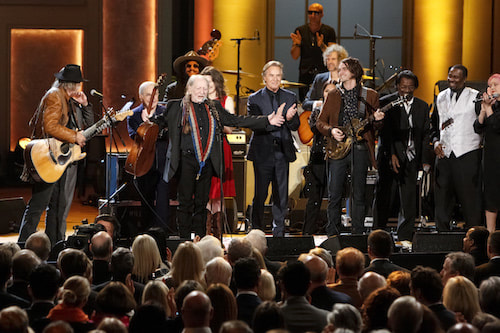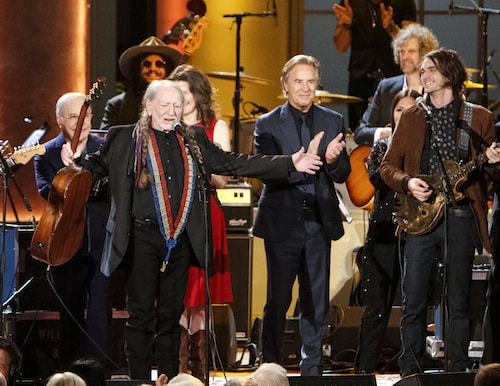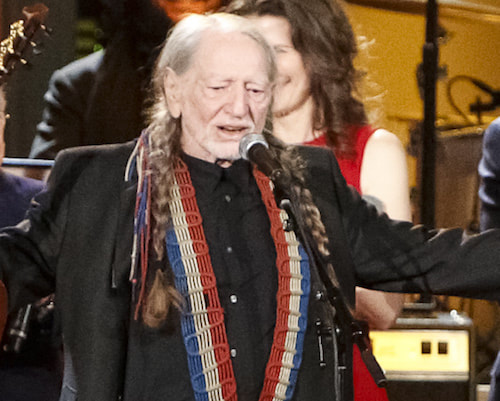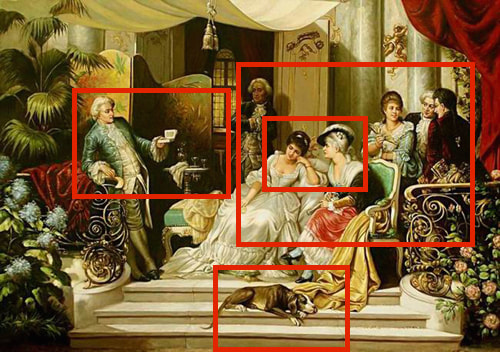Video Direction as an Application of the Study of Music
Article in College Music Symposium
Part 1: Composing Shots, Preparing Students
|
This picture of Willie Nelson and friends at a Gershwin Award PBS broadcast can be used to illustrate the three basic types of shots. A "long" or "wide" shot establishes an environment and leaves nothing out. This shot could be even wider, to include all the singers and the proscenium. It establishes a place, but lacks enough resolution to clearly see the expression of the performers
Figure 1: Wide shot |
|
Preparing Students
A useful exercise is to have students draw boxes on copies of paintings or photos in order to show a variety of possible shots. This gives everyone a chance to consider the options of wide, medium, and tight shots and can help identify students who might be well-suited to being camera operators. Other considerations are their understanding of music, eagerness, and attention span. Figure 4 |
[ Go on to Part 2 ]



